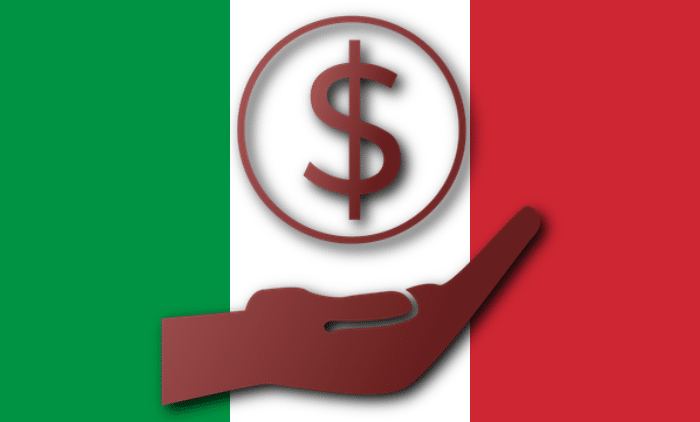Taxes, June 8 is “tax freedom day” and we will stop working for Fisco-WWN
[ad_1]
This is what we’re about to wrap up on the last weekend of the year that we work for the taxman. In purely theoretical terms, in fact, next Wednesday Italian taxpayers will finish paying the taxes, levies and social contributions necessary to run schools, hospitals, transport, to pay salaries to public employees, pensions, etc. Thursday 8 June, therefore, we celebrate the day of tax liberation; in other words, if from the beginning of January to 7 June we worked to honor the demands of the tax authorities, from the following day until next 31 December, however, we will do it for ourselves and for our families. From this school case developed by the Gia Research Office, it emerges that for the current year 158 working days were needed (Saturdays and Sundays included) to fulfill all the tax payments foreseen this year (Irpef , Imu, Iva, Irap, Ires, various surtaxes, social security/insurance contributions, etc.). Compared to 2022, this year’s tax freedom day falls one day earlier.
Italy third in the EU for tax burden
The day of fiscal liberation is not an absolute principle, but a theoretical exercise that demonstrates empirically, if there were still any need, how excessive the tax burden weighing on Italians is. A specificity that also emerges to an equally evident extent when we compare our tax burden with that of the EU countries. In 2022, in fact, only France and Belgium recorded a higher tax burden than ours. If in Paris the tax burden was 47.7 percent of GDP, in Brussels it stood at 45.1 percent. Here, on the other hand, it reached the record threshold of 43.5 percent. Among the 27 in the EU, Italy is in third place. Germany, on the other hand, is positioned in 9th place with a tax burden of 41.9 per cent, while Spain is in 12th place with 38.5 per cent. The average of the countries of the Euro Area was 41.9 per cent.
Tax appointments
If the study by the CGIA represents a real school case, the reality, unfortunately, still has very high levels of complication/difficulty. In this month of June, for example, Italian taxpayers are expected to have as many as 115 tax appointments, almost 4 a day on average. The calendar includes: 50 deadlines (substitute tax, VAT, withholding taxes, Tobin tax, entertainment tax, etc.), by 16 June; 1 communication of the TV fee by 20 June; 55 payments (IRPEF, surtaxes, dry coupon, withholdings, VAT, IRES, IRAP, substitute taxes, etc.), 4 declarations (IRPEF, substitute taxes, intra, etc.), 4 communications (lease agreements, financial information for tax purposes between EU states, etc.) and a TV license application by 30 June. Obviously, these are deadlines that will not affect all taxpayers, however they give a sense of the cumbersomeness and complexity of our tax authorities. The richest regions pay the most taxes The citizens of the Autonomous Province of Bolzano pay the highest number of taxes to the tax authorities. In 20194, each resident of this area paid an average of 13,158 euros in taxes, duties and levies. Followed by the Lombards with 12,579 euros, the Aosta Valley with 12,033 euros, the Emilia-Romagna with 11,537 and Lazio with 11,231 euros. Calabria, on the other hand, is the area where the weight of the tax authorities is lowest: each resident of this territory paid the tax authorities an average of 5,892 euros. The national average figure is 9,581 euros.
The rise in tax revenues
Furthermore, in Def 2023, it is reported that following the new national accounting guidelines, the deductions connected to the Superbonus 110% and the Façade Bonus have been reclassified. The latter have transformed from lower revenues, in the period of their use, to greater expenditure, starting from the period in which the facilitation was introduced. In the three-year period 2020-2022, for example, this reclassification accounted for approximately 4.6% of GDP. This novelty has led to an upward revision of tax revenues. Again with regard to 2023, the DEF lacks an official quantification of the real tax burden, however it can easily be hypothesized that the situation does not differ much from that of 2022, considering that the majority of interventions are aimed at lowering the tax burden in for citizens and businesses. In this regard, the following should be noted: the measures against high energy costs, tax credits for businesses (electricity and gas), the lowering of the natural gas rate and the reduction of general system costs; interventions on the tax wedge which give rise to a reduction in the social security contributions payable by employees; the extension of the flat tax to small businesses and the introduction of the incremental flat tax.
The strong gap between North and South
The strong gap between the north and south of the country shouldn’t surprise us. Our tax system, in fact, is based on the criterion of progressiveness. Therefore, in regions where income levels are higher, thanks to better economic and social conditions, tax revenues are also higher than elsewhere. It should also be noted that in geographical areas where the primary sector has a significant impact on the overall economy, the benefits provided by the legislator (tax deductions in particular) significantly reduce the taxable base of taxpayers belonging to these activities and, consequently, also the total revenue from taxes paid to the Treasury by that region. Finally, for the calculation of regional per capita revenue, the total amount of taxes paid to the tax authorities by each territory was considered, therefore the figure will be higher especially in geographical realities where the presence of economic activities is more widespread.
[ad_2]
Source link



